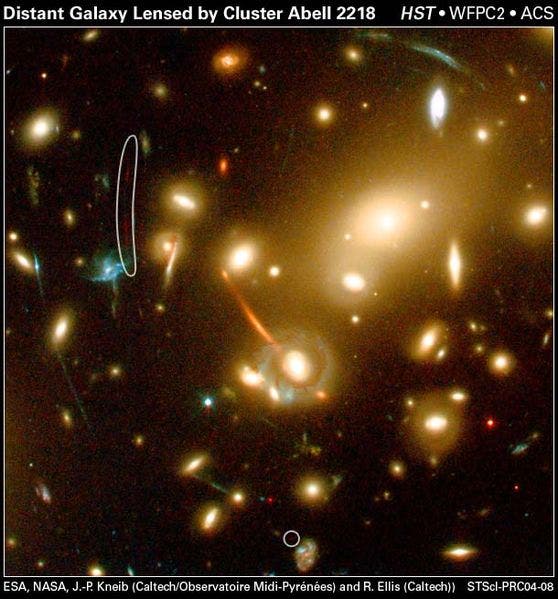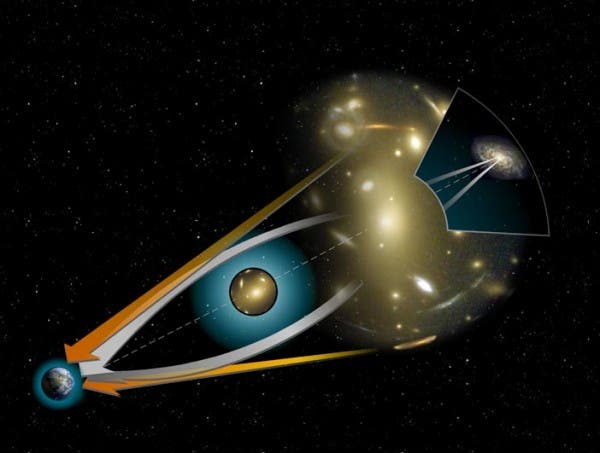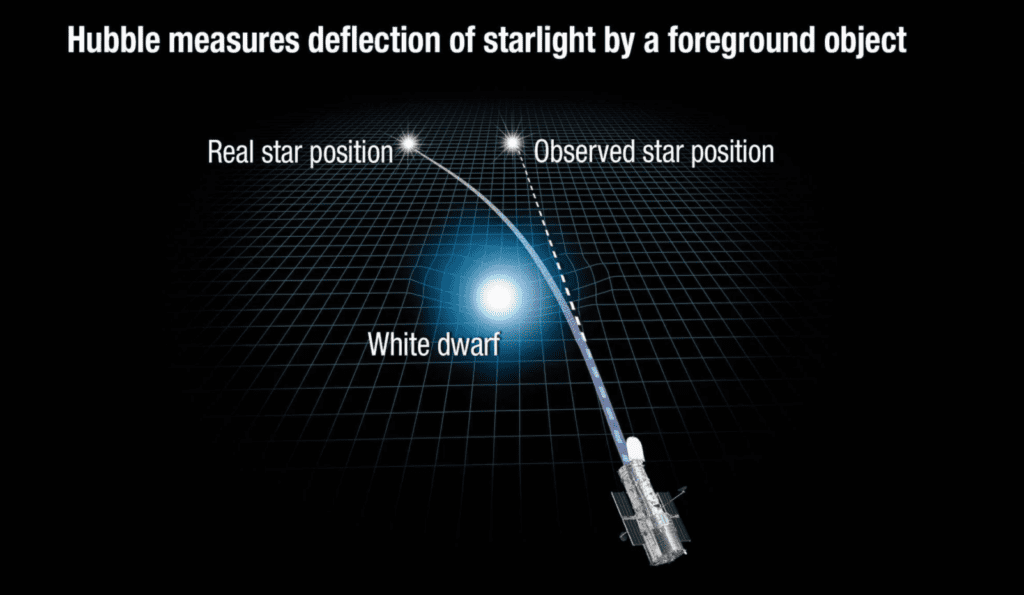In an unprecedented new study, astronomers working with the Hubble Space Telescope have measured the mass of a white dwarf star using a cosmic phenomenon first predicted by Albert Einstein. The technique is essentially centered around an optical illusion called gravitational lensing. For more than 100 years, scientists have proposed that it’s possible to precisely measure a star’s mass using this quirk of General Relativity, though Einstein himself doubted it. Finally, the debate is put to rest with this breakthrough study.
Zooming in
Famed physicist Albert Einstein predicted, as a result of his Theory of General Relativity, that whenever light from a distant star passes by a closer object, gravity acts like a magnifying lens bending the distant starlight but also brightening it. This effect has been documented extensively around very massive structures such as galaxies. Captioned below is the great galaxy cluster Abell Cluster 2218. Notice the giant, stretched arcs? Those are actually background galaxies that get distorted and magnified by the giant cluster which bends the light. That’s analogous to how normal lenses such as the ones in a magnifying glass or a pair of spectacles work by bending light rays that pass through them in a process known as refraction, in order to focus the light somewhere (such as in your eye). In fact, astronomers often use gravitational lensing as a natural telescope, to great effect.

What we’re looking at is called strong gravitational lensing, which is very rare because it implies a fortuitous alignment between a foreground mass and a background galaxy. To understand gravitational lensing we need to go back to Einstein’s theory of general relativity which posits that space is not fixed. Instead, it’s merged with time in a four-dimensional continuum called space-time which is morphed by gravity. Massive objects like a black hole or star create curves in space-time much like a bowling ball causes a dent if you place it on a mattress. It follows that if a ray of light passes near such a massive object, it will follow the distorted curve in space-time and veer away from its straight path.
The deflection directs more light to the observer causing background objects to become brighter. Sometimes the effects create a ring of bright light around the foreground object which scientists refer to as an Einstein right.
The schematic below explains in graphic detail how it all works.

In 1919, measurements of starlight curving around a total eclipse of the Sun provided one of the first convincing proofs of Einstein’s general theory of relativity. But in a 1936 article in the journal Science, Einstein added that because stars are so far apart “there is no hope of observing this phenomenon directly.” Even Einstein can be wrong though.
An international research team directed by Kailash C. Sahu found it is possible to measure the extremely small displacement caused relative light objects like stars (light compared to a black hole or galaxy) using sensitive instruments mounted on the Hubble Space Telescope. They did so for a white dwarf star called Stein 2051 B located only 18 light-years away from Earth. This star caused a displacement of only 2 milliarcseconds on the plane of the sky, or about equal to the width of a quarter seen from 1,500 miles (2,400 kilometers) away. At such a resolution, it’s no wonder Einstein deemed the feat almost impossible given the technology available during his time.
“Einstein would be proud. One of his key predictions has passed a very rigorous observational test,” said Terry Oswalt of Embry-Riddle Aeronautical University, who was not involved in the research.

Credit: ESA/Hubble & NASA
.
This is the first report of “gravitational microlensing” by a star other than the sun. The discovery required eight measurements between October 2013 and October 2015 of the shifts in the apparent position of a distant star as its light was deflected around the white dwarf star Stein 2051 B.
“The ring and its brightening were too small to be measured, but its asymmetry caused the distant star to appear off-center from its true position,” Oswalt says. “This part of Einstein’s prediction is called ‘astrometric lensing’ and Sahu’s team was the first to observe it in a star other than the Sun.”

The observation revealed Stein 2051 B has a mass that is about two-thirds that of the sun, indicating it formed from a star about 2.3 times the mass of the sun. Previously, another method measured the white dwarfțs mass to 0.5 times the mass of the sun, which didn’t sit well with what we know about white dwarf formation.
“This new tool for determining masses will be very valuable as huge new surveys uncover many other chance alignments over the next few years,” Oswalt said.
“At least 97 percent of all the stars that have ever formed in the Galaxy, including the Sun, will become or already are white dwarfs – they tell us about our future, as well as our history,” the physicist concluded.
Journal reference: K.C. Sahu el al., “Relativistic deflection of background starlight measures the mass of a nearby white dwarf star,” Science (2017). science.sciencemag.org/cgi/doi/10.1126/science.aal2879






